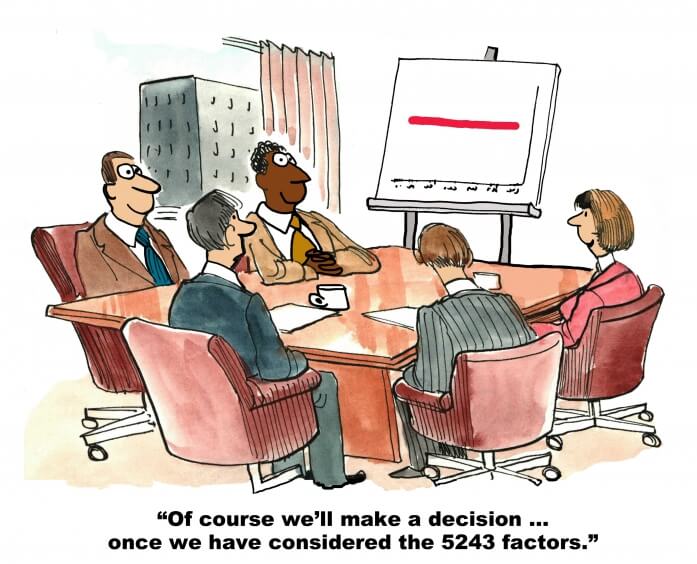Your Sales Prospect Needs More Time…Or Do They?

A major frustration for salespeople is dealing with prospects that can’t seem to make a decision. Perhaps the biggest of those frustrations is struggling with prospects who indicate the desire to make a decision (and to do so by a certain date), but when the date rolls around, they invariably need more time.
How many times have prospects told you, “I need more time to make a decision”? Too many?
In those situations, it’s easy to blame the prospect for being indecisive, uncommitted, and a procrastinator.
But, does the prospect deserve all of the blame? Shouldn’t some of it fall on your shoulders? Perhaps, the major share?
Your estimation of the prospect’s willingness to make a decision should begin at the start of the selling process when you are digging into and defining the prospect’s need. If the need has existed for some time, why has the prospect waited to address it? If the need is relatively new, is the prospect really ready to move on it? By exploring those questions, you should gain some sense of the prospect’s eagerness to make a decision.
Also, the magnitude of the positive consequences of fulfilling the need or the negative consequences of not fulfilling the need should give you some indication regarding the prospect’s sense of urgency to make a decision. If the consequences, either positive or negative, are meager, then the prospect’s motivation to make a decision is also likely to be meager. If, on the other hand, the consequences, either positive or negative, are significant, then the prospect’s motivation to make a decision, and make it in a timely manner, is also likely to be significant.
Exploring the duration of the need and the consequences of fulfilling the need should give you a fairly good idea of whether you’re dealing with a “motivated buyer” who is likely to make a decision in a reasonable amount of time or a “tire kicker” who is likely to need more time to make a decision…or never make one at all.
Another aspect of the selling opportunity that will influence the timing of a decision is the complexity of the prospect’s decision-making process. The more people involved in the buying decision and the greater the number of different corporate levels participating in the decision, the lengthier the process is likely to be….and the more likely decision target dates will be missed. The need to do a thorough job of identifying the prospect’s decision-making process (including the “who,” “what,” “when,” “where,” and “how” elements) should be obvious. The more you understand the process, the less likely you’ll be surprised…and disappointed by it.
Another element that contributes to “I need more time” requests is the salesperson’s failure to secure firm commitments from prospects, in advance of scheduled presentations, to make decisions at the conclusion of those presentations. All too often, salespeople consider it a given: they will make a presentation…and the prospect will make a decision. End of story. But, it’s rarely the end of the story. Without the prospect’s firm commitment for a decision, it’s more likely to be the beginning of a story entitled, “The Quest for the Elusive Decision.”
By carefully evaluating your prospects’ needs (including their motivations for and consequences of fulfilling them) and, where your evaluation indicates the appropriateness of scheduling presentations, securing firm commitments from those prospects to make decisions, you will reduce—perhaps even eliminate—the requests for “more time.”








